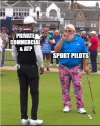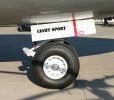Will sport pilots still be limited to day vfr, always needing to have ground in sight?
You can operate at night:
"61.329 How do I obtain privileges to
operate an aircraft at night?
You may act as pilot in command
with a sport pilot certificate during
night operations if you:
(a) Receive three hours of flight
training at night from an authorized
instructor and receive a logbook
endorsement from an authorized
instructor certifying that you are
proficient in the operation of the aircraft
at night;
(b) Conduct at least one cross-country
flight during the flight training under
paragraph (a) of this section at night,
with a landing at an airport of at least
25 nautical miles from the departure
airport, except for powered parachutes;
(c) Accomplish at least ten takeoffs
and landings at night with an
authorized instructor; and
(d) Either hold a medical certificate
issued under part 67 of this chapter or,
provided the pilot holds a valid U.S.
driver’s license, meet the requirements
of § 61.23(c)(3) and conduct the
operation consistently with § 61.113(i).
If you are satisfying this by meeting the
requirements of § 61.23(c)(3), if there is
a conflict between the requirements of
this section and § 61.113(i), this section
controls."
61.23(c)(3) is the requirement to have taken the "medical education course" within the last 24 months, 61.113(i) are the limits for basic med.
The existing limits on altitude and visibility do not appear to have changed:
"61.213(c)
(11)At an altitude of more than 10,000 feet MSL or 2,000 feet AGL, whichever is higher.
(12) When the flight or surface visibility is less than 3 statute miles.
(13) Without visual reference to the surface."




